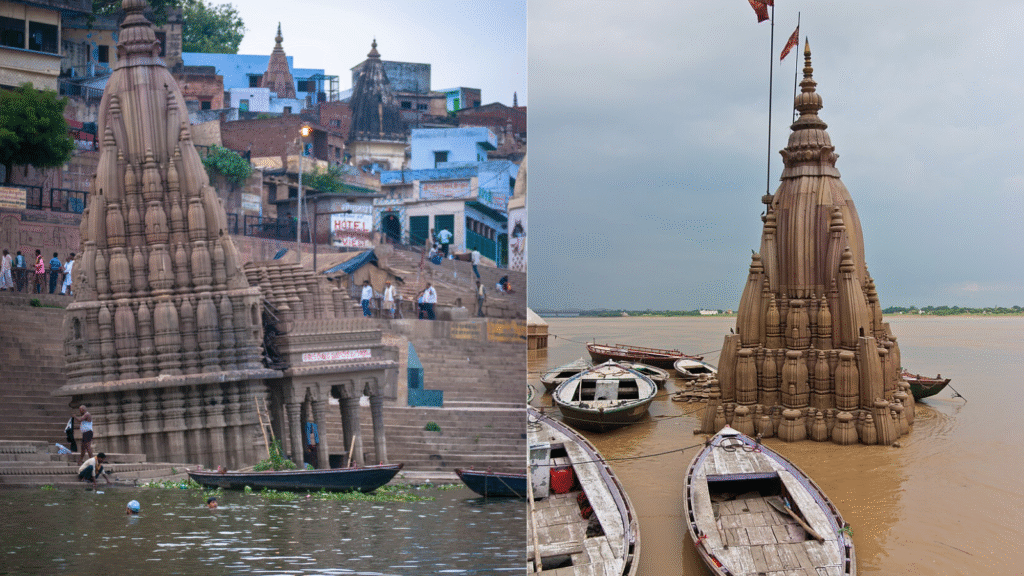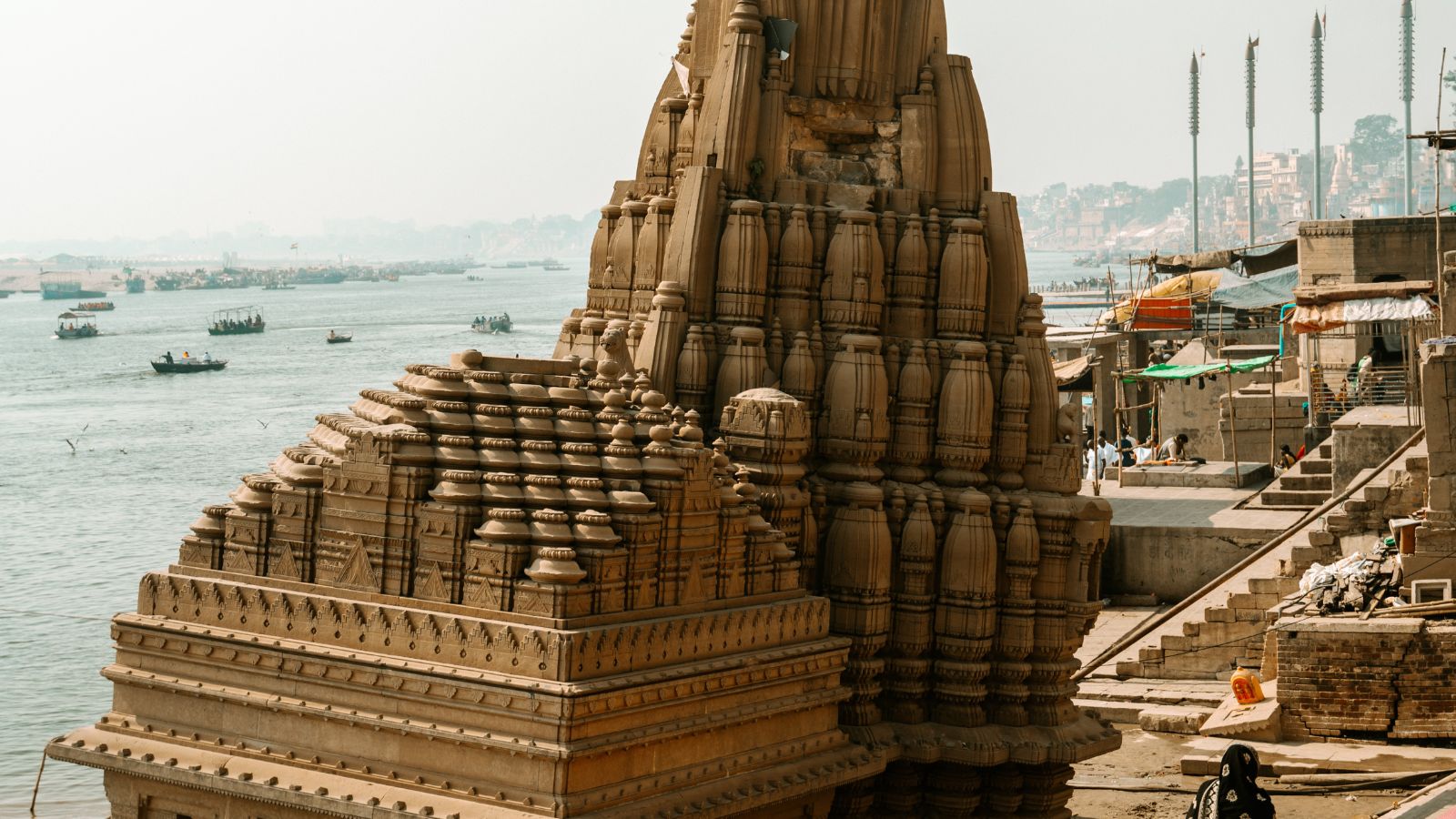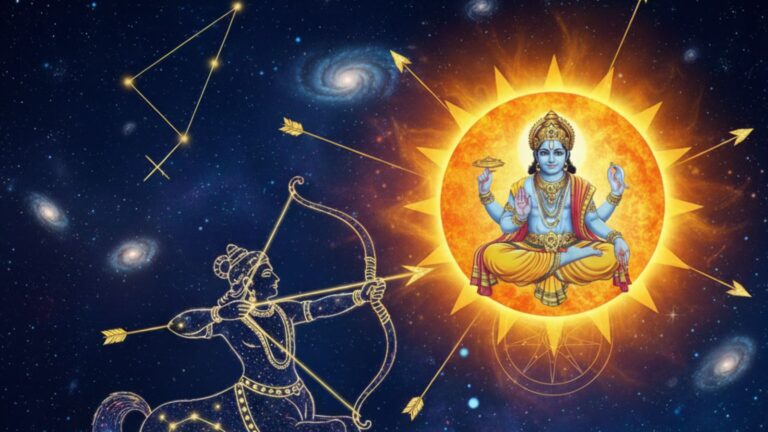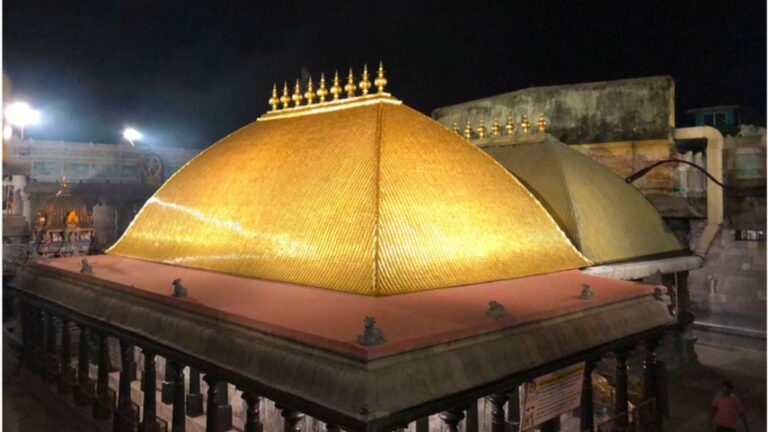Situated at Manikarnika Ghat in Varanasi, the Ratneshwar Mahadev Temple is famous for its dramatic nine-degree tilt, which exceeds that of the Leaning Tower of Pisa. Dedicated to Lord Shiva, who is worshipped as Ratneshwar Mahadev, it is also called Kashi Karvat (Kashi being Varanasi’s ancient name and karvat meaning “leaning” in Hindi). Built in the Nagara architectural style with a prominent shikhara and phamsana mandapa*, its most unusual aspect is its placement so low on the riverbank
The temple’s history remains debated: revenue records indicate construction between 1825–1830, possibly under the patronage of the Amethi royal family or Queen Baija Bai of Gwalior. Folklore attributes it to an unnamed servant of Raja Man Singh, who named it after his mother, Ratna Bai, and was cursed for claiming to have repaid his “debt to his mother.”

Visuals of the temple; the tilt is not visible in the second image where the temple is submerged
The unusual tilt likely stems from its low-lying, waterlogged foundations on Ganges silt and the constant impact of seasonal flooding. The temple’s garbhagriha (sanctum) remains submerged in the Ganges River for most of the year. It’s only during the summer do the waters recede, revealing the sanctum for regular worship. The temple draws devotees and curious tourists. It remains one of the most photographed monuments of Varanasi.
* Phamsana Mandapa: A pillared hall in Indian temple architecture with a pyramidal, tiered roof that rises in steps, resembling a truncated pyramid.
Image credits: Wikimedia Commons



